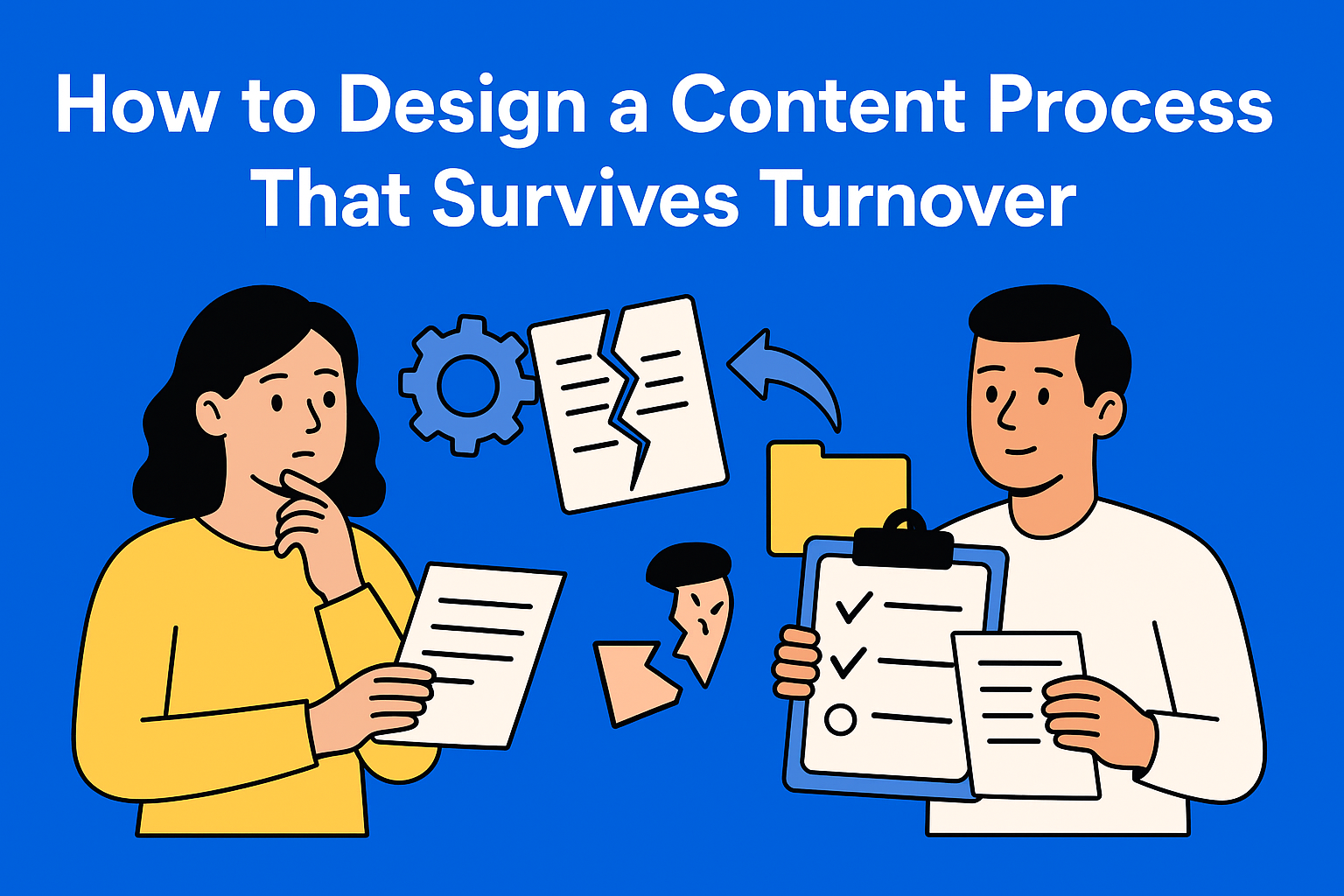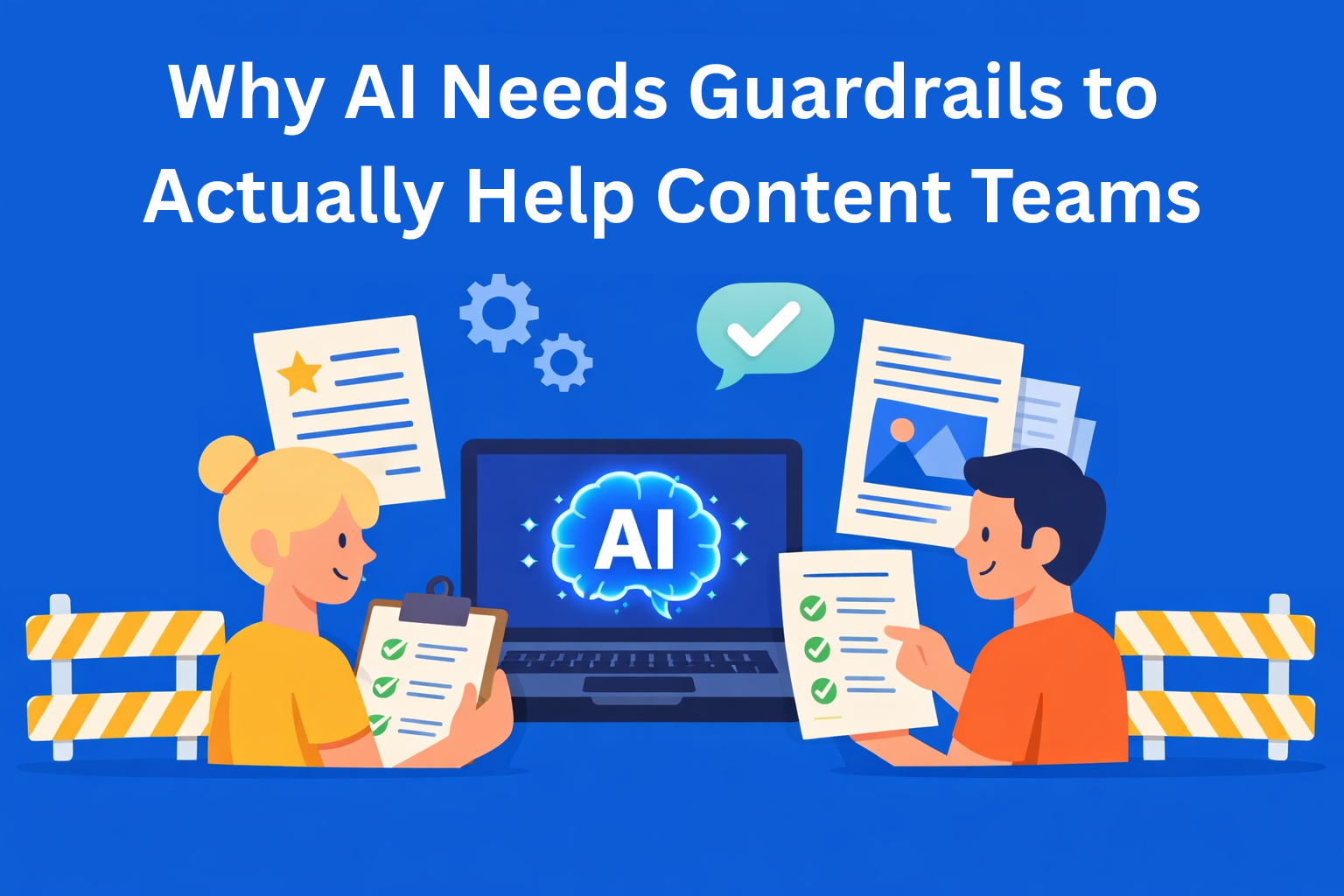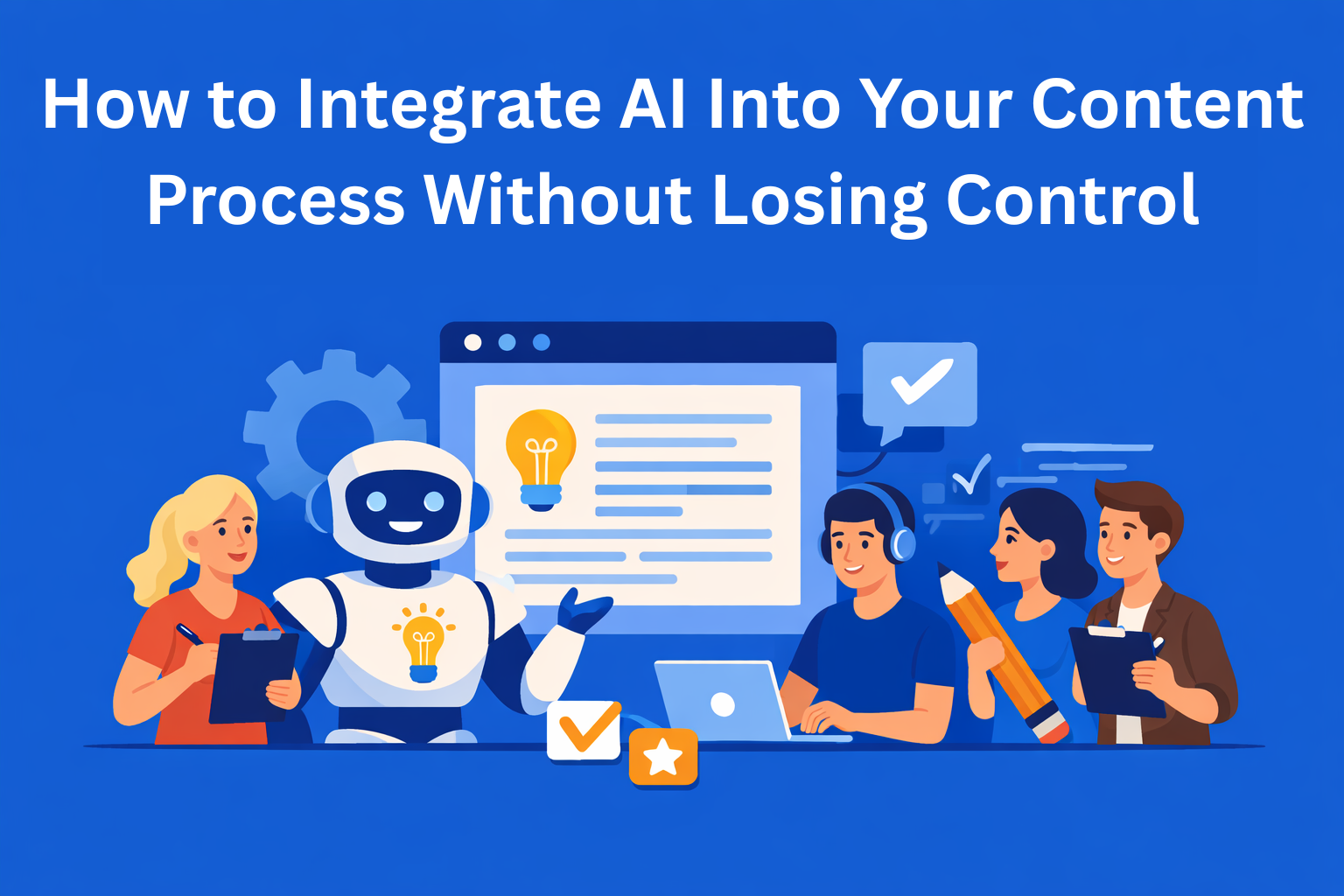How to Design a Content Process That Survives Turnover
When key team members leave, your workflow shouldn’t collapse with them. Learn how to document, delegate, and design a content process that stays strong - no matter who’s in (or out) of the room.

Here’s a painful truth most teams learn the hard way: when one key person leaves, chaos follows. Deadlines slip, projects stall, and suddenly everyone’s asking, “Wait… who was supposed to do this part?”
If your content process relies too much on specific people rather than a defined system, turnover becomes a nightmare. All the knowledge walks out the door with them - and the rest of the team spends weeks trying to piece it back together.
The solution isn’t to stop people from leaving (we’re not running a creative prison). It’s to build a content process that’s strong enough to survive turnover - one where roles, steps, and knowledge are documented, clear, and easy to transfer.
Let’s talk about how to do that.
Key Takeaways
- Turnover reveals fragile workflows - If things fall apart when someone leaves, your system relies too much on individuals.
- Documentation is your safety net - Recording steps, roles, and checklists protects continuity during team changes.
- Defined roles eliminate confusion - Clearly outlining who drafts, reviews, and approves ensures projects stay on track.
- Centralization and automation increase resilience - A unified platform with reminders and shared assets keeps work flowing without micromanagement.
- Transparency creates confidence - Open access to information and processes empowers teams to stay productive through change.
When One Person Is the Process
You’ve probably seen it before:
- The one person who knows how the CMS works.
- The editor who remembers every brand rule (because no one wrote them down).
- The project manager who somehow keeps track of every draft, feedback round, and approval date - all in their head.
It works fine… until they take a vacation. Or a new job. Then everything grinds to a halt.
That’s not a people problem - it’s a process problem. If one person’s absence can stall production, the workflow isn’t resilient.
The goal is to make knowledge accessible, not dependent. Everyone should know where to find information, even if the usual “go-to person” isn’t around.
Step 1: Document Everything (Yes, Everything)
If it’s important enough to do, it’s important enough to document.
That means more than just a shared folder full of random docs. Documentation should live inside your process - visible, structured, and easy to update.
For example:
- Your brand voice and tone guide lives in your content platform.
- Your workflow steps are clearly outlined (who writes, who edits, who approves).
- Each stage has its own checklist - what’s required before moving forward.
Platforms like EasyContent make this simple by letting teams create documentation, templates, and style guides directly in projects. So when someone new joins, they don’t need to hunt for the “mystery doc” from two years ago.
Step 2: Standardize Roles and Responsibilities
You shouldn’t need a psychic to figure out who’s supposed to do what. Turnover hits hardest when roles are vague.
Every project should clearly define:
- Who owns the draft.
- Who provides feedback.
- Who gives final approval.
And just as important - what each role actually does. A “reviewer” who doesn’t know what to look for is just another pair of eyes on the doc.
When your team’s structure is clear, new hires can step in without derailing the flow. And current team members don’t waste hours figuring out who to chase for feedback.
Step 3: Build Knowledge Transfer Into the Workflow
Don’t wait for someone’s resignation email to start the handover. Instead, make knowledge sharing part of your regular process.
For example:
- After each project, note key takeaways - what worked, what didn’t, what should change next time.
- Keep feedback and edits inside your content platform so others can see why decisions were made, not just what changed.
- Encourage team members to rotate tasks occasionally - it builds backup knowledge naturally.
This way, when turnover happens, there’s already a trail of context. You don’t have to reconstruct the past from scratch.
Step 4: Automate the Reminders, Not the Relationships
A lot of chaos happens because no one knows what’s next. Tasks get buried, deadlines sneak up, and people forget to check in.
Automation helps here - but it shouldn’t replace communication. Let automation handle the reminders, not the relationships.
In EasyContent, for instance, automated notifications remind everyone when it’s their turn - whether it’s to review, approve, or publish. But the human part (like explaining why something needs a change) still belongs to people.
Think of automation as your polite assistant: it keeps you on track without ever rolling its eyes.
Step 5: Centralize Assets (and Context)
Half the battle during turnover is finding things. Where’s the old logo? Which version of the blog did we publish? What font are we using again?
A central hub fixes that. Store everything in one place - assets, templates, drafts, analytics, and briefs. Not in email threads. Not across ten Google Drive folders.
Centralization means:
- Less time searching, more time creating.
- No lost history - new teammates can instantly see past projects and learn the style.
- Brand consistency stays intact even as people change.
If your workflow lives in EasyContent, this happens naturally. Each project keeps its assets, comments, and revisions together - so even if someone new joins mid-project, they can get up to speed in minutes.
Step 6: Encourage a Culture of Transparency
No process survives without the right culture behind it. Teams that hoard knowledge (even unintentionally) make turnover harder. Teams that share it freely make turnover irrelevant.
Encourage open documentation, regular updates, and visible communication. If someone’s unsure about a change, they should feel comfortable asking. If a mistake happens, treat it as a learning opportunity, not a witch hunt.
Transparency makes people confident - and confidence keeps the workflow strong.
Step 7: Create a “Plug and Play” Onboarding
The best sign of a resilient workflow? When new hires can contribute in their first week.
To make that possible:
- Keep onboarding documentation short, clear, and practical.
- Include step-by-step examples of how content moves from idea to publish.
- Provide sample templates and previous projects as references.
In EasyContent, onboarding becomes much easier - new team members can explore workflows, read guidelines, and see past content all in one system. It’s like giving them a tour of how your content brain works.
The Hidden Bonus: Stability Breeds Creativity
When teams don’t have to worry about chaos, they finally have room to think creatively. A stable workflow doesn’t stifle innovation - it enables it.
Writers, editors, and designers can focus on the work itself instead of chasing approvals or reinventing the process every time. It’s the difference between running in circles and running with purpose.
So yes, documenting, standardizing, and automating might sound boring at first. But they’re what make the exciting parts of content creation (the ideas, the storytelling, the strategy) actually possible.
Conclusion
Turnover is inevitable. Chaos isn’t.
When your content process is built to survive change, you don’t lose momentum every time someone walks out the door. You keep publishing, improving, and growing - because your workflow doesn’t depend on memory or heroics. It depends on structure.
And if you’re ready to make that structure real, platforms like EasyContent can help you document your process, centralize your assets, and keep your team running smoothly - no matter who’s in the room.
Because at the end of the day, great content isn’t built by individuals. It’s built by systems that outlast them.






